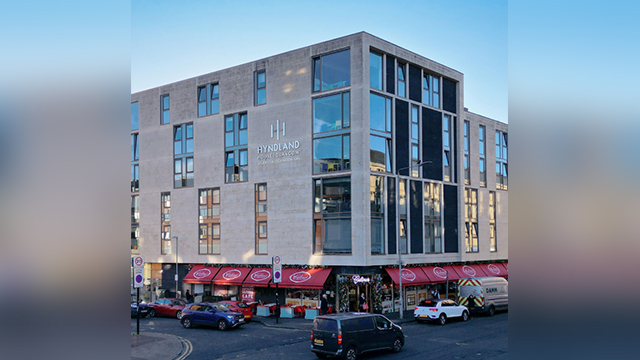Are there dinosaurs on the M4? Travel into Reading by either train or car, and the great glass blocks of the region’s business parks, once the epitome of 1980s office architecture, loom on the horizon. Once a symbol of the Thames Valley’s success, these buildings are now a part of the region’s 1.3m sq ft of surplus space – roughly seven-and-a-half years’ take-up at current levels.
The question is, with a recovery not predicted until 2006, will occupiers still want these symbols of corporate supremacy or are the buildings heading for extinction? Big changes are happening among the Thames Valley’s bread-and-butter US occupiers. The presidential election campaign, a low dollar and knock-on effects, such as an increased move towards outsourcing in Asia, have all added to the confusion (see box).
But it is not just international problems that landlords and developers have to face. The UK government’s policies of increasing mixed-use development while simultaneously lessening dependence on cars threaten the future of the out-of-town office park. In addition, any recovery could lead to a return of labour shortages, forcing companies to find new ways to entice staff through their doors.
Labour became a major problem during the dot.com boom. At that time, companies had to look beyond the six-figure salary to attract staff. Stories from the US told of one company giving programmers a Honda convertible if they recruited five staff and a Ferrari if they recruited 10. Incentives stretched to providing the best working conditions and most attractive office environments. At this time the glass blocks came complete with a parking space to keep the Ferrari safe.
But is that still the case? Nick Coote, regional director at Lambert Smith Hampton, says: “We noticed that companies were beginning to look at properties not just as occupational premises but also as a way to help retain staff.”
He cites British Airways’ Waterside headquarters in Staines as an example, with its five buildings joined by walkways, complete with olive grove chill-out zones, a stream, cafés, a Waitrose and a travel shop.
There is a precedent for prime office locations dropping off occupier’s radar. GlaxoSmithKline’s former headquarters in Brentford is a prime example. This used to form part of the Golden Mile but has been sold to Barratt for residential use.
True, many things have changed in the Thames Valley region. Statistics show that, over a five-year period, IT and telecoms remained the largest occupier in the region. However, in the first three months of this year, the sector slipped to fifth place. This looks set to continue, with big requirements coming from Exxon, BT Syntegra, Amgen and Hertz.
That is not to say that technology has gone away forever. According to research from Experian and Jones Lang LaSalle, output from the IT and communications industries is expected to rise by 9% over the next five years, with a resulting 3% rise in employment.
Unfortunately, the one thing that has not changed is the decline in take-up. Figures from FPDSavills show take-up in the Thames Valley plunged by nearly 50% in the first quarter of this year. This follows demand dropping by 18% in 2003, according to Rogers Chapman’s Golden Triangle spring 2004 report, with most occurring in the second half of the year. As a result, all eyes are now fixed on 2006.
But two years is a long time to wait. And some buildings in the region have been empty for two years. Guy Parkes, divisional director at Rogers Chapman, points to BT Syntegra, which is looking for 100,000 sq ft of space. “We’ve undergone a number of searches and some of these buildings are starting to look a bit tired. Some need to be given a new colour scheme to match today’s fashion.”
Parkes adds: “Business parks can be very soulless and have a short-term lifespan. The out-of-town market needs to mature and move to the next stage. They need better transport links, better amenities to motivate the small communities within the parks.”
The first cracks are already starting to appear. LSH’s Coote explains that while “the glass boxes used to be considered sexy”, occupiers are now beginning to come off the business parks and into Reading town centre. “They want to differentiate themselves, and they see the way taxation is bearing down on cars. That has watered down the original reason people went to business parks — to get a parking space.”
But balancing a cosmopolitan environment, where staff can pop down to the shops in their lunch hour, with the large amounts of space that big corporates require could be tricky. Town centres are not known for their large development sites. Coote, however, believes this could be about to change. “There are schemes being mooted for the town centre, although they are concepts rather than coming out the ground,” he says. For example, Chatham Street in Reading is one such scheme that will add over 1m sq ft of offices, retail and residential to the city centre.
But not all agents agree that business parks are losing their appeal. Ian Brindley, a partner at Haslams, believes they will always be appealing. “The sort of tenants business parks are trying to attract are image conscious,” he says. He is referring to international companies that like to maintain their logo above the door and the prestige of a marble reception. He adds: “They want to maintain the corporate feel, and I don’t think international companies will relish being on a mixed-use site.”
Parkes disagrees. “Businesses are not that naïve, and the egotistical approach will change,” he says. Flexibility and price is now more important to occupiers, he explains. “Creating huge cost savings means better salaries, and that is better than a big logo on the building,” he adds. He gives the example of cost-cutting US corporates that will not sanction leases longer than five years.
Chris Hiatt, European director at Jones Lang LaSalle, is confident that the downturn will be short lived. “We are gradually seeing business confidence getting better,” he says. He concedes his analysis is based on a gut feeling, but adds: “We can now see economic improvements and, with a six- to 12-month lag, more profit will mean more business space.”
Michael Garvey, partner at Hicks Baker, believes technology will, however, play a huge part in the reabsorption of space. Pointing to Veritas, which occupies offices on Green Park, he says: “It has released about 50,000 sq ft of space and said that, regardless of how business grows, it will never need it.”
Garvey adds that as home-working, flat screens, wireless technology and broadband gain further momentum, the space a company requires per person will shrink. “I’m not saying there won’t be a recovery in the Thames Valley, but technology is a threat, whether physically, with jobs moved to India, or because far less space is needed.”
He explains that, whereas 10 years ago, companies would look to a ratio of one person per 150 sq ft, it is now closer to one per 100. There are also knock-on effects for the structure of buildings. Wireless technology could cause features, such as raised floors, to become a thing of the past, he believes. “That’s the danger of property cycles. A building could be cutting edge in the late 1990s but now, while it is not obsolete, architecture and technology move on, and the building slips off tenants’ wish lists.”
|
|
|
A weak dollar has stopped the return of US occupiers to the Thames Valley. Many commentators blame President Bush for keeping the dollar low to inflate the perceived wealth of the country. Nick Coote, regional director at Lambert Smith Hampton, says: “There has been a growth in the US economy but we are not necessarily seeing the benefits of the extra activity. The dollar is a brake on the Thames Valley economy.” Bracknell has been particularly badly hit. Its reliance on US occupiers has meant take-up on buildings of more than 5,000 sq ft is “derisory” at just 36 000 sq ft last year. This compares with the recent average of 250,000 sq ft per year, says Coote. In Asia, the draw of the Chinese renminbi and cheap labour in India is still a threat. According to Roger Chapman’s latest Golden Triangle report, an estimated 400,000 US business processing jobs have moved overseas in recent years. Another 3.3m are predicted to go by 2015. The report states also that venture capitalists in Silicon Valley now insist that start-up companies subcontract software development to India and China. Uncertainty over the presidential election could also be having a serious effect on potential occupiers. Roger Chapman’s Guy Parkes says the effects have not started to bite yet. “People do not know enough about the Democrats’ candidate, so it is a case of wait and see. But as we get closer to election time, there may be some stalling,” he says. |










